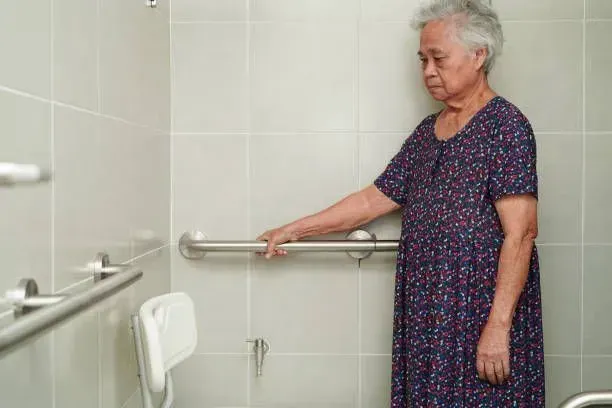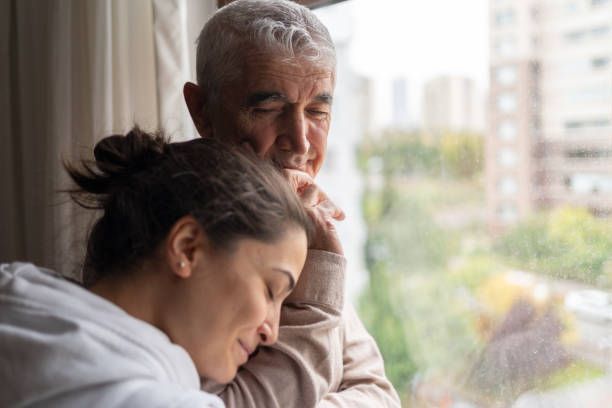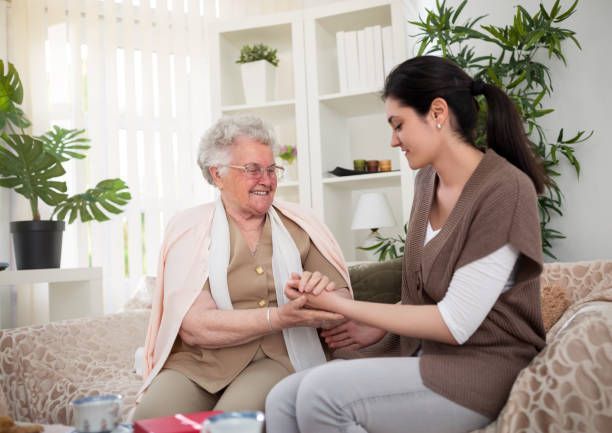8 Age Related Changes That Increase Senior Fall Risks

As individuals age, a spectrum of physiological changes takes place, predisposing seniors to an increased risk of falls. At 7 Day Home Care, we recognize the nuanced challenges associated with these age-related transformations and understand the paramount importance of comprehensive fall prevention strategies. From the decline in balance and coordination to reduced muscle strength and mass, changes in vision, medication side effects, joint stiffness and arthritis, neurological changes, foot problems, and environmental factors, our approach is rooted in tailored care solutions. By acknowledging and addressing each of these factors, we aim to create a supportive and secure environment for seniors, fostering their independence while mitigating the potential risks associated with the natural aging process. Through proactive measures, personalized care plans, and a commitment to enhancing overall well-being, 7 Day Home Care strives to empower seniors to age gracefully and safely within the comfort of their homes.
- Decline in Balance and Coordination: Aging can lead to a decrease in balance and coordination, making seniors more prone to falls. The vestibular system, responsible for maintaining balance and spatial orientation, can undergo age-related changes. This may affect the ability to detect and respond to movements. Additionally, proprioception, the body's ability to sense its position in space, may decline with age. This can affect coordination and the ability to make precise movements.
- Reduced Muscle Strength and Mass: Loss of muscle mass and strength, known as sarcopenia, can impact stability and increase the risk of falls. Sarcopenia is the age-related loss of muscle mass and strength. Sarcopenia typically begins in midlife and accelerates in the later years. The exact mechanisms are not fully understood, but factors such as changes in hormone levels, inflammation, and decreased protein synthesis play a role.
- Changes in Vision: Age-related changes in vision, such as reduced depth perception and peripheral vision, can affect one's ability to navigate and avoid obstacles. Vision changes with aging are common and can be attributed to various physiological alterations in the eyes. The most prevalent age-related vision issues include presbyopia, a gradual loss of the ability to focus on close objects due to a stiffening of the eye's lens; diminished pupil size, leading to reduced adaptation to low light conditions; and an increased susceptibility to conditions such as cataracts, glaucoma, and age-related macular degeneration. Additionally, changes in the composition and flexibility of the eye's lens can affect color perception, and the overall decline in tear production may contribute to dry eyes.
- Medication Side Effects: Aging often brings a higher likelihood of requiring medication to manage various health conditions, and this can inadvertently contribute to an increased risk of falls among older individuals. Many medications come with side effects such as dizziness, drowsiness, or changes in blood pressure, which can compromise stability and coordination. Polypharmacy, the use of multiple medications concurrently, is common in the elderly, and the interactions between different drugs may further amplify these side effects. Additionally, some medications can affect cognitive function and reaction times. As a result, seniors on medication regimens need careful monitoring by healthcare professionals to assess and mitigate potential fall risks, considering factors like dosage adjustments, alternative medications, or lifestyle modifications to enhance overall safety and well-being in the aging population.
- Joint Stiffness and Arthritis: Joint stiffness and arthritis significantly increase the risk of falls in older individuals due to the impact these conditions have on mobility and balance. Arthritis, characterized by inflammation of the joints, often leads to pain, reduced range of motion, and stiffness, making it challenging for seniors to move freely and maintain stability. Stiff and painful joints can compromise the ability to react quickly to changes in the environment or uneven surfaces, increasing the likelihood of trips or stumbles. The constant discomfort associated with arthritis may also lead to a reluctance to engage in physical activities, contributing to muscle weakness and further impairing balance.
- Neurological Changes: Neurological changes associated with aging pose a significant risk factor for falls in older individuals. The aging process can result in a decline in nerve function, affecting sensory perception, reflexes, and coordination. Slower nerve conduction and reduced efficiency in processing information from the senses may lead to delays in recognizing and responding to potential hazards. Additionally, age-related alterations in the brain, such as changes in the cerebellum and other motor control areas, can impact balance and spatial awareness. These neurological changes may result in diminished proprioception, the body's ability to sense its position in space, making it more challenging for older adults to navigate their surroundings with confidence.
- Foot Problems: Various foot problems that commonly emerge with aging can significantly elevate the risk of falls in older individuals. Conditions such as bunions, hammertoes, falling arches, and arthritis can lead to structural changes in the feet, affecting stability and balance. Reduced sensation, often associated with peripheral neuropathy, can impair the ability to detect uneven surfaces or obstacles. Additionally, age-related issues like decreased skin elasticity and thinner fat pads on the soles of the feet may contribute to discomfort and increase vulnerability to pressure sores and calluses, making walking more precarious. Ill-fitting footwear or shoes lacking proper support further exacerbate these problems.
- Environmental Factors: Environmental factors play a pivotal role in increasing fall risks for the elderly, often compounded by the challenge of making necessary adjustments to mitigate these risks. Common hazards in the home, such as uneven flooring, inadequate lighting, or the absence of handrails, can pose significant threats to older individuals with declining physical abilities. The inability to swiftly adapt the environment to address these hazards due to factors like limited mobility, diminished vision, or cognitive changes further heightens the risk of falls.
Open communication between the elderly and their family members with healthcare professionals is pivotal, especially if there's a perceived heightened risk for falls. Initiating a dialogue with the doctor or medical professionals allows for a comprehensive evaluation of the individual's health status and potential fall risks. It enables healthcare providers to assess factors such as medication side effects, joint health, neurological changes, and vision issues that could contribute to an increased risk of falls. Family members play a crucial role in facilitating these conversations, offering insights into any observed changes in the individual's mobility, balance, or overall well-being. This proactive communication fosters a collaborative approach to fall prevention, leading to personalized care plans that address specific concerns and empower the elderly to take active steps toward maintaining their independence and safety.
Understanding these age-related changes can help in implementing preventive measures and interventions to reduce the risk of falls in the elderly, which may include the need for Home Health Aide support. 7 Day Home Cares' team of highly trained and experienced caregivers and Home Health Aides, provides compassionate in-home care tailored to the unique needs of individuals in Manhattan, Queens, Brooklyn, Nassau County, and Suffolk County, New York. Contact 7 Day Home Care today at 516-408-0034 to learn more about our best and affordable in-home care services in NYC and surrounding areas.
Brian Callahan
7 Day Home Care










